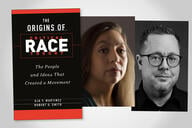You have /5 articles left.
Sign up for a free account or log in.

Getty Images
Several of the largest education publishers say they now generate most of their sales and revenue from digital products, but both analysts and some in the industry disagree on if the shift represents a transformation for the textbook industry or a forced rebranding.
When McGraw-Hill Education this week reports its finances for 2015, the results will show that the company’s digital products -- including learning platforms ALEKS, Connect and LearnSmart and digital textbook service SmartBooks -- for the first time sold more units than its print products. The company already teased that detail in a press release earlier this month, showing healthy year-over-year digital growth.
McGraw-Hill Education isn’t alone. A spokesperson for Cengage Learning, whose digital offerings include the MindTap learning platform, said the company is on track this fiscal year to see digital sales surpass print sales, both in terms of unit sales and revenue.
Sandi Kirshner, Cengage’s chief communications officer, said in a statement that the results demonstrate that digital course materials are catching on in higher education.
“As we see more instructors and students using and wanting the benefits of a digital learning experience -- from greater personalization to improved mastery of concepts -- the technology-based learning tools are proving their advantages over the static printed page,” Kirshner said. “And although learners may still want print in some cases based on the course and how they learn best, the print book is becoming more of an optional purchase because the digital learning experience continues to get better and is more convenient, easy to use and effective.”
The results -- if accurate -- represent a major milestone for the education publishing industry. Analysts watching the market have long waited for the revenue streams to cross as a symbolic milestone that the transition from textbooks to digital course materials has entered a new phase.
But the way publishers define “digital sale” raises questions about whether or not their announcements may not reflect the nuance of the sales of course materials. At Cengage, for example, a digital sale can mean selling access to one if its digital products, but also selling an ebook, a textbook bundled with online components or digital supplementary material.
McGraw-Hill Education does things slightly differently. It too counts bundles, but it only reports the portion of the sales value that can be attributed to the digital component, said Daniel Sieger, vice president of corporate communications. Digital products generated more revenue than print in 2014 as well, he said, but 2015 marked the first year the unit sales numbers flipped. Sieger declined to go into further detail as the company is in its legally required “quiet period” before going public.
Pearson does not distinguish between digital and print sales, but a spokesperson noted that digital and services revenues rose to 65 percent across its global business in 2015, up from 47 percent in 2010. John Wiley & Sons did not immediately respond to a request for comment.
Not everyone agrees that bundles should count toward digital sales, however. Joseph J. Esposito, a management consultant, said in an email that it is “sexier to say that the business is digital” instead of acknowledging that it is still “driven by print.”
“Let's say that [a publisher] sells a package for $150, which includes print and online access,” Esposito wrote. “The print is the core textbook, the online material is supplemental questions. I would call that a print sale because the central unit is print. … Another scenario: a kid buys a used print textbook. A publisher sells online access to the supplemental material for $40. There was literally no textbook unit sale for the publisher. Is that $40 print or digital?”
Publishers have shown an eagerness to promote digital course materials, describing themselves as software (in the case of Cengage) and “learning science” companies (McGraw-Hill Education). More importantly, Esposito said, digital course materials would allow publishers to sell directly to students, which could lower both their own costs and textbook prices for students.
“No college publisher likes to talk about this because they don't want to alienate the retail channel, which they need right now,” Esposito wrote.
Other publishers questioned whether or not the transition from print to digital is still a worthwhile narrative for the industry to track. Executives at Macmillan Learning declined to share if the company’s digital or print products generate more unit sales and revenue, saying it’s the result, not the format, that matters.
“I am not sure that perpetuating a metric like digital vs. print adds value,” CEO Ken Michaels said in a statement. “Most teaching delivery today and student engagement involves a combination of reading, thinking, research, formative studying and analytical feedback that involves both print and digital tools/services. Learning is hybrid and it demands agility depending on how instructors teach. It is not like the trade world where you read digitally or read print. Education demands multiple forms of engagement in order to optimize learning.”




